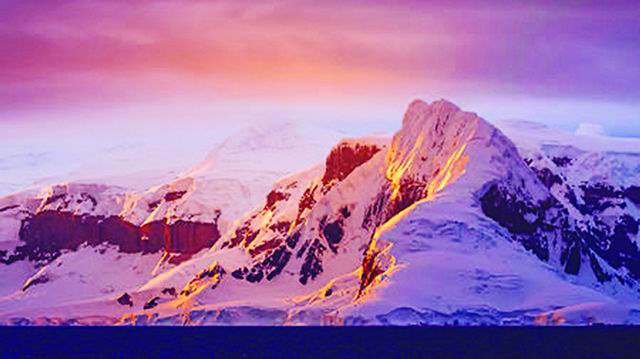Researchers have discovered a Martian mineral, yellow potassium iron, deep in the ice core of Antarctica. This fragile tan material may have been forged in the same way on Earth and Mars – from dust in ancient ice.
Researchers believe that glaciers not only carve valleys, but also help create the material that makes up Mars. The results of the relevant research have been recently published in Nature-Newsletter.
In 2004, the USS Opportunity probe first discovered yellow potassium iron on Mars.
Because the formation of yellow potassium iron requires water, iron, sulfate, potassium and acidic conditions, but these conditions are difficult to meet on Mars, scientists began to theoretically explore why this mineral is so rich on Mars.
Some people think it may have been left by evaporation of a small amount of salt water and acidic water.” But alkaline basalt in the crust of Mars neutralize acidic water.” The author of the study and geologist Giovanni Baccolo of the University of Bicoca in Milan, Italy, said.
Another view is that yellow potassium iron was produced in a large amount of ice covering the planet billions of years ago.
Over time and the ice field expands, dust will accumulate in the ice and may be converted into yellow potassium iron in the snow mud between ice crystals. But this process has not been observed anywhere in the solar system.
On earth, people can occasionally find yellow potassium iron from piles of mining waste exposed to air and rain, but no one expected it could be found in Antarctica.
When Baccolo searched for minerals that might indicate the ice age cycle in a 1,620-meter-long ice core, Baccolo found strange dust particles, which he thought might be yellow potassium iron.
To confirm the identity of the mineral, Baccolo’s team measured how it absorbed X-rays and examined the particles under a high-power electron microscope to confirm that it was yellow potassium iron.
The researchers said that the particles had obvious cracks but no sharp edges, indicating that they were chemically eroded in small areas of the glacier.
“This study shows that yellow potassium iron is formed in the same way on Mars.” Megan Elwood Madden, a geochemist at the University of Oklahoma, who did not participate in the study, said.
However, she doubted whether this could explain the large presence of yellow potassium iron on Mars, “on Mars, these sediments are several meters thick”.
Baccolo admits that the ice core contains only a small amount of yellow potassium iron grains, which is smaller than a grain of sand.
But he explained that there is much more dust on Mars than in Antarctica.” Everything on Mars is covered with dust, and under the right conditions, more volcanic ash is conducive to the formation of more yellow potassium iron. Baccolo said.
Baccolo hopes to use the Antarctic ice core to study whether the ice sediments of ancient Mars provide conditions for the formation of other minerals.
He said that yellow potassium iron ferries show that glaciers are not only terrestrial “carving machines”, but may also contribute to the chemical composition of Mars.” This is only the first step in connecting the ice deep in Antarctica with the Martian environment.



